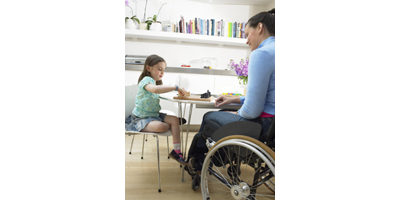by Lanny L.M. Silver
If we or our family and friends live in conventional homes, visiting will not be possible or very inconvenient for everyone. There are barriers such as steep and slippery walkways, stairs, narrow doors and entrances, corridors and washrooms that will be unusable, unaccessible and dangerous for some.
VisitAble homes are designed to remove restrictions by considering a few simple adjustments at the design stage of our house plans or renovations. “VisitAble” is the term that has been adopted in Manitoba, many other provinces and American states, as well as other countries to make our Homes more inclusive and functional. The term has been around since the mid-’80s and came into being as a response to the demand for better and more functional, flexible and sustainable housing.
The private-sector housing industry is not required or regulated to build VisitAble homes, although some have already been constructed and, at first glance, are not perceivably different than the conventional home. Public housing and commercial public buildings are regulated by building codes or restricted by housing grants to include VisitAble suites or the more inclusive “barrier-free” design so that everyone has access.
It is not the intent to regulate or make all homes VisitAble. Given the choice of a conventional home or a VisitAble home, the purchasers need to be made aware of the functional and spatial features and to be made aware that standards are available and have been established to ensure that their home will in fact be visitable.
What would a VisitAble house have? There are four basic requirements in Winnipeg (three being the older standard). These requirements have to be included in a manner to allow access to a home from the outside and,when inside, allowing participation in activities that occur in the main activity areas of the home, be able to use a washroom and, if invited or required, be able to stay overnight.
They are simply:
• Access into the home (no step, level surfaces and functional considerations).
• Wider doors and wider corridors.
• A VisitAble washroom located on the VisitAble floor.
• An area to accommodate extended visits (VisitAble bedroom or area that can be curtained off).
One example of a VisitAble home — there are an infinite number of possibilities — is a home with two bedrooms, one bathroom, one washroom, a living room, dining room, kitchen/breakfast area and a study. It sounds like a normal home. What makes this home VisitAble is that the rooms have been located and the house designed to meet the basic VisitAble requirements:
• The house can be accessed from the outside by a landing, walkway or ramp and no steps with wide enough doorways.
• The entry, living room, dining room, kitchen and washroom are on the VisitAble level.
• A study is also on the VisitAble level and can be used as a temporary or permanent bedroom, as required.
• The washroom is on the VisitAble floor area but down a wide hallway.
• The washroom is VisitAble and large enough to accommodate a wheelchair or a walker in comfort, safety and privacy.
• The other two bedrooms and bathroom are located on an upper level accessible by a normal hallway and stairs.
Such is a description of a VisitAble home that allows for family celebrations and events that accommodate and can include older people and those that may have a disability. It also allows an area for one to recover from an accident or health issue (the study/bedroom) without having to climb stairs to get to a washroom or a bedroom.
The VisitAble home can also reduce, or in some cases eliminate, the need of having to stay in a hospital or a care facility. The designed-in features also allows one to stay in one’s own home longer as we age. With our severe and extreme climate, having a no-step entry and level access also makes it easier for young families pushing children in strollers, as well as the elderly using canes, walkers, scooters, as well as reducing falling and tripping hazards.
A VisitAble home is more intelligent and flexible than a conventional home. It is value-added for very little, if any, additional cost. It makes a home more livable and spacious by its nature, as well as safer and inclusive. It is a sustainable solution that allows for families to evolve throughout the normal physical changes and events that occur over time and to be able to stay in the same home, if they choose.
(Larry L.M. Silver is a Winnipeg-based architect; e-mail to architect@lannysilverarchitect.ca)



